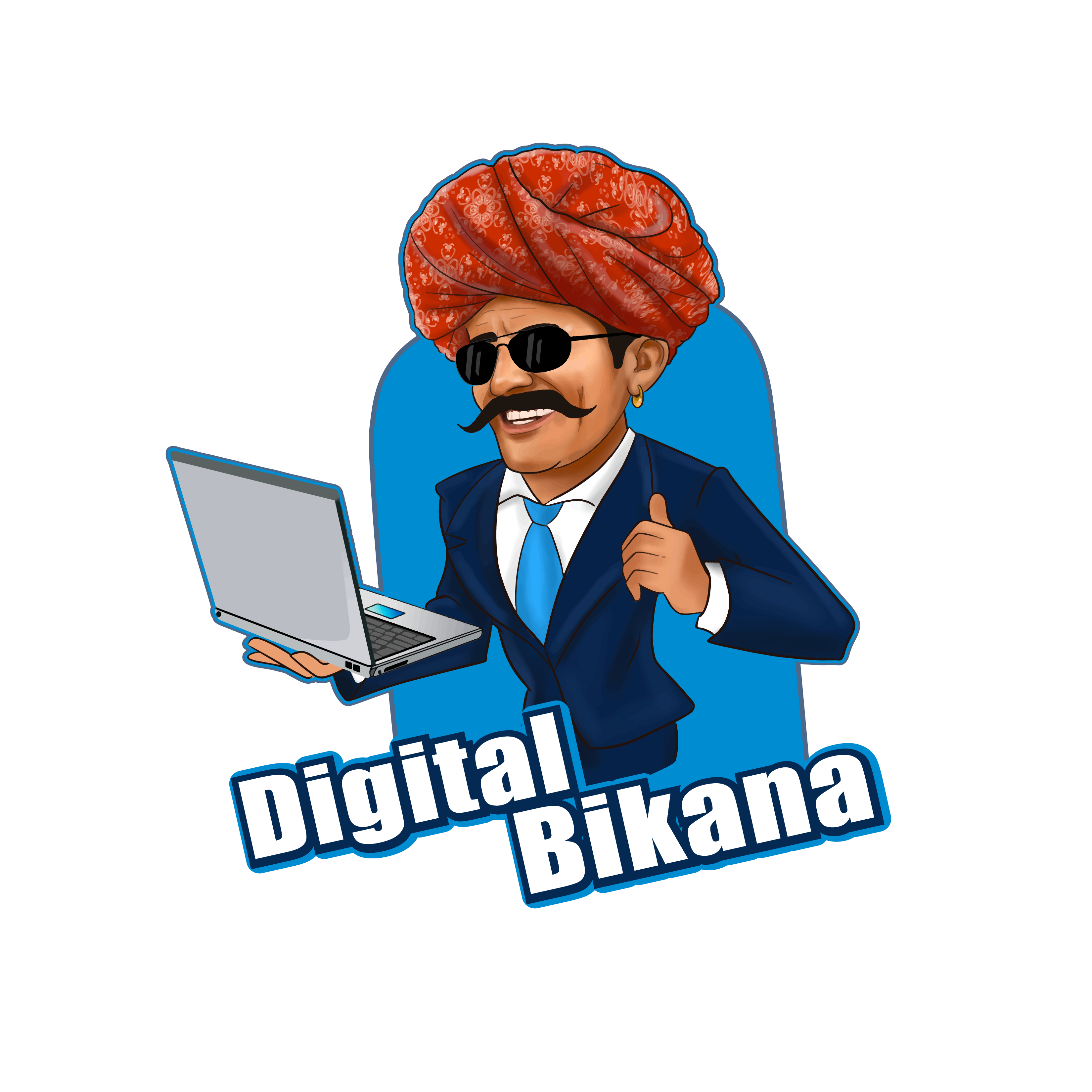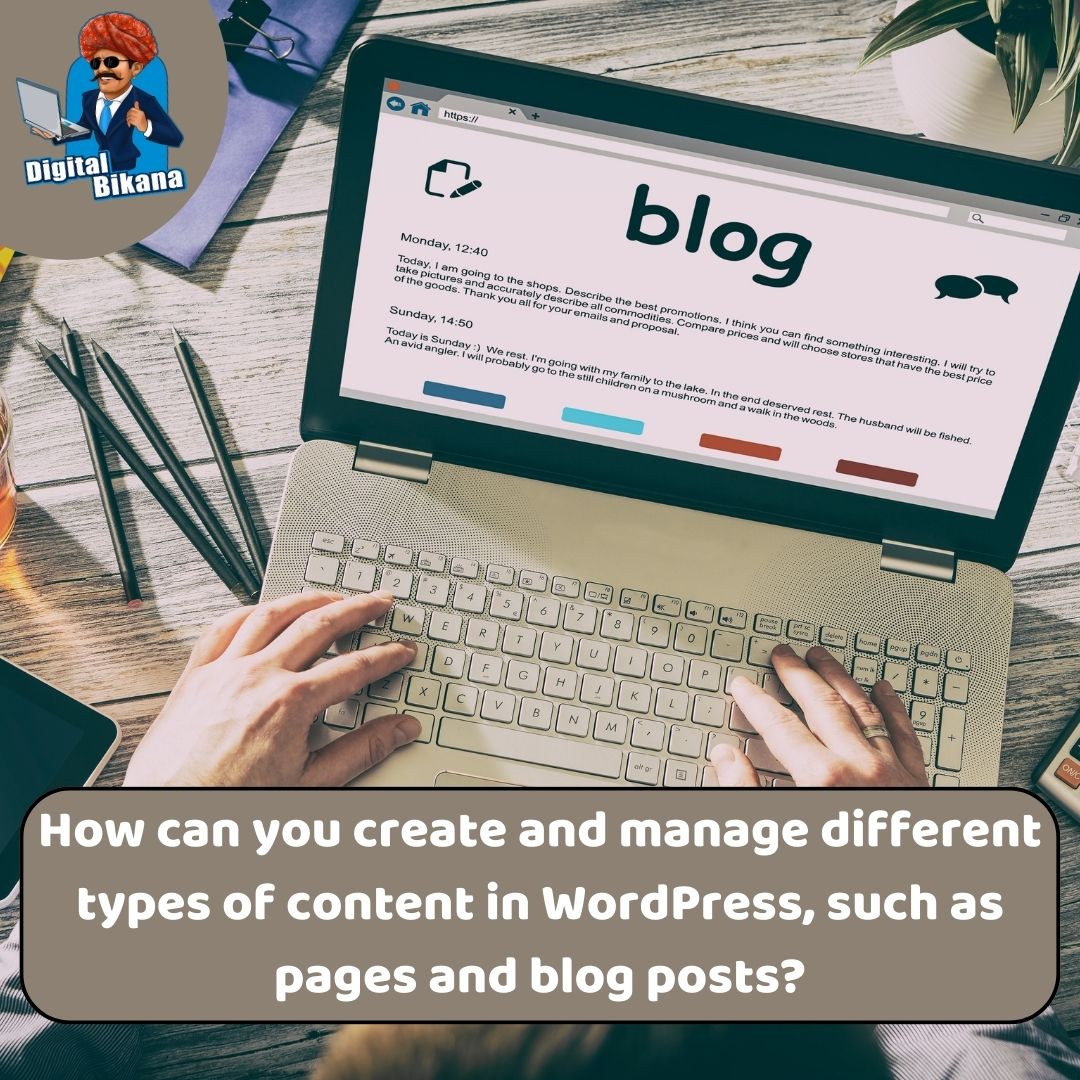How can you create different types of content in WordPress?
In this article we are going to talk about How can you create and manage different types of content in WordPress, such as pages and blog post? WordPress is a versatile content management system that allows you to create and manage various types of content, including pages and blog posts. Understanding how to effectively utilize these content types is crucial for building a successful website.
How can you create and manage different types of content in WordPress, such as pages and blog posts?
In this comprehensive guide, we will explore the process of creating and managing different types of content in WordPress. From structuring your website with pages to engaging your audience with blog posts, we will cover everything you need to know to harness the full potential of WordPress as a content management platform.
1. Pages
Creating Structured Content:
Pages in WordPress are used for creating static and hierarchical content that forms the backbone of your website. Here’s how you can create and manage pages effectively:
a. Creating Pages
In the WordPress dashboard, go to “Pages” and select “Add New.” Enter a title for your page and use the content editor to add text, images, and other media. You can also choose page attributes, such as parent pages, templates, and featured images.
b. Organizing Pages
WordPress allows you to create a hierarchical structure by setting parent and child pages. This helps in organizing and categorizing your content, especially for websites with a large number of pages. Rearrange the page order using drag-and-drop functionality.
Read Also: What are widgets and how can you use them in WordPress website designing?
c. Customizing Page Templates
Many WordPress themes provide pre-designed page templates that offer different layouts and functionalities. Selecting an appropriate template can enhance the visual appeal and functionality of your pages.
d. Publishing and Managing Pages
Once you have created a page, you can preview it, save it as a draft, or publish it to make it live on your website. You can also manage pages by editing, updating, or deleting them as needed.
2. Blog Posts
Engaging with Dynamic Content
Blog posts are dynamic content entries that are displayed in reverse chronological order on your website’s blog page. Here’s how you can create and manage blog posts effectively:
a. Creating Blog Posts
In the WordPress dashboard, navigate to the “Posts” section and click on “Add New.” Enter a title for your blog post and use the content editor to add text, images, and other media. You can also categorize and tag your blog posts for easier navigation and organization.
b. Formatting and Styling
Use the content editor to format your blog posts by applying headings, lists, bold or italic text, and other formatting options. You can also add featured images to make your posts visually appealing when displayed in blog feeds.
Read Also: Best practices for designing the header and footer of a WordPress website
c. Publishing and Scheduling
Once you have created a blog post, you can choose to publish it immediately or schedule it for a future date and time. This allows you to plan and automate your content publishing strategy.
d. Managing Blog Posts
WordPress provides various tools to manage your blog posts efficiently. You can edit, update, or delete posts, as well as manage comments and trackbacks for each individual post.

3. Categories and Tags
Organizing Content
Categories and tags are taxonomies that help organize and categorize your content effectively. They allow users to navigate through related content and improve the overall user experience.
a. Categories
Categories provide a broad classification system for grouping similar content. Create categories that align with the main topics or themes of your website. Assign relevant categories to your blog posts to help users find related content easily.
b. Tags
Tags provide a more specific way to describe and label your content. Unlike categories, tags are not hierarchical. Add relevant tags to your blog posts to provide additional context and improve searchability.
4. Content Management Tips
To effectively manage your content in WordPress, consider the following tips:
a. Use a Content Calendar
Plan and organize your content creation and publishing schedule using a content calendar. This helps maintain consistency and avoid content gaps.
b. Maintain a Consistent Writing Style
Develop a consistent tone, writing style, and formatting for your content to create a cohesive brand identity.
c. SEO Optimization
Optimize your content for search engines by incorporating relevant keywords, writing meta descriptions, and optimizing headings and URLs.
d. Use Visual Media
Enhance your content with high-quality images, videos, infographics, or other visual media to make it more engaging and shareable.
5. Plugins for Content Management
WordPress offers a wide range of plugins to enhance your content management capabilities. Here are a few popular plugins:
a. Yoast SEO
This plugin helps optimize your content for search engines by providing suggestions for improving readability, keyword usage, meta tags, and more.
b. Akismet
Akismet is a powerful anti-spam plugin that filters out spam comments on your blog posts, keeping your website’s comments section clean and manageable.
c. Editorial Calendar
This plugin provides a visual calendar interface within WordPress, allowing you to plan, schedule, and manage your content easily.
d. Jetpack
Jetpack offers a suite of features to enhance content management, including site stats, social media sharing, automated social media posting, and more.

Conclusion:
Creating and managing different types of content in WordPress is a fundamental aspect of building a successful website. Whether you’re structuring your website with pages or engaging your audience with blog posts, understanding the process and utilizing the available tools is essential. Use pages to create static and hierarchical content, and leverage blog posts to engage users with dynamic and timely information.
Organize your content using categories and tags to improve navigation and user experience. Employ content management tips, such as using a content calendar and maintaining a consistent writing style. Additionally, consider using plugins to optimize your content for search engines, manage spam comments, and enhance your content management capabilities. By effectively creating and managing content in WordPress, you can build a compelling and user-friendly website that resonates with your audience. So, Now I hope you have understood about create and manage different types of content in WordPress, such as pages and blog posts?
You can also checkout this website designing institute to learn digital marketing course by enrolling in our course Or Contact Digital Bikana on +91-8949483728

